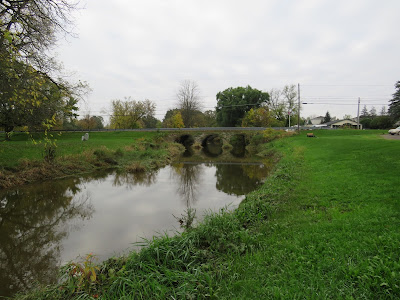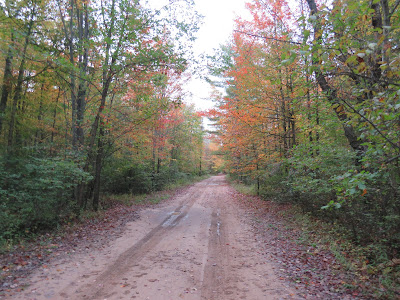The early morning is sunny and brisk as Riley and I hike southeast through Midland County’s Jasper Township Cemetery and arrive on the bank of the Pine River where color changes in the fall foliage are starting to show. Nearby, I notice Sugar Maple leaves turning color. Continuing downstream, I pause to look and listen to a steady stream of inflow draining into the river from cropland above the steep bank. My first thought is about the quality of this water. Is it merely clean runoff or is it tainted with chemical pollutants applied earlier this summer by the farmer? Moving away from the water, I listen to the familiar call of a male Redwing Blackbird, a sound more commonly heard in early spring in cattail marshes as these birds arrive from their wintering grounds to establish nesting territories. Since the adults and fledglings that nested locally have long since headed south, I suspect this one nested far to the north and is making its way south as well. Continuing to explore the flood plain, I spot some fresh Racoon scat containing lots of undigested fruit as well as old, bleached-out Broad-banded Forest Snail shell. From an aerial map, one can see that the landscape we are exploring is the inside loop of a highly meandering section of the Pine River (stock photo) that could likely develop into an oxbow lake in the future (stock photo). Returning to the riverbank, I pause again to listen to a singing Robin while watching the water flow around the bend. From here it continues northeast for 15 miles toward Midland where it converges with the Chippewa River at the Chippewa Nature Center. On our way back to the car, we plod through a meadow displaying lots of dried Milkweed pods bursting open to expose seeds with their silky white fibers, called floss. During World War II, after losing access to kapok, a seed fiber from the Philippines that was used for life jackets, the United States found the water repellent properties of milkweed floss were an effective substitute. To process the fiber, the Milkweed Floss Corporation of America was established in Petoskey, Michigan, in 1942 (stock photo). The need for milkweed was great, and because it was not a farmed crop, ordinary citizens and schoolchildren answered the call for picking ripe pods by scouring country roadsides and railroad tracks for the plant. Although the Milkweed Corporation closed after the war, enough seed floss was collected and processed to fill about 1.2 million life preservers.
An autumn story, riverflow
Your waters speak, fast or slow
Much you’ve gathered, riverflow
Much you carry, much you show
Leaves of color floating by
Mirrored surface reflecting sky
Muskrats swim beside the shore
Collecting greens for winter store
Beyond the bend, away you go
Force of nature, riverflow
D. DeGraaf



